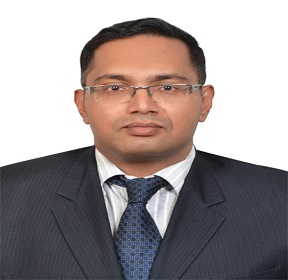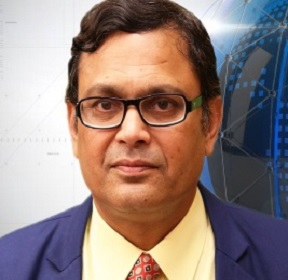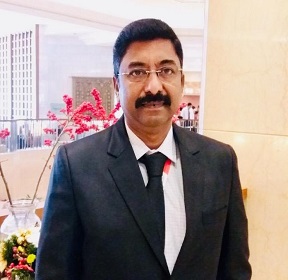Speakers
Pradeepkumar Pillai
Dubai Health Authority United Arab EmiratesTitle: Mechanical circulatory support in interventional cardiology and in acute cardiogenic shock – A review of current and future trends
Abstract:
The advent of mechanical circulatory support (MCS) as an offshoot of cardio-pulmonary bypass, opened up new vistas for providing circulatory support for high-risk Interventional cardiological procedures. A very high degree of safety in inpatient care can be achieved in incorporating mechanical circulatory support for high-risk patients undergoing complex interventional cardiological procedures like high-risk Percutaneous Coronary Interventions, Trans-catheter Aortic Valve Implantation (TAVI/TAVR) procedures. Another aspect of MCS is its potential for salvaging and stabilizing failing circulatory dynamics in patients undergoing acute cardiogenic shock. Advances in extracorporeal circulation techniques and equipment along with revised protocols of patient care have resulted in improved patient outcomes in this critical patient category. The presentation reviews current devices and MCS therapy regimens in use and tries to predict future trends with a view to making the procedure more effective in delivering favourable outcomes.
Biography:
Pradeepkumar Pillai is a Senior Clinical Perfusionist , currently working in the Department of Cardiothoracic Surgery, Dubai Hospital, Dubai, United Arab Emirates. He is also the current Editor-in Chief, Indian Journal Of Extra-Corporeal Technology, the official journal of the Indian Society of Extra-Corporeal Technology (ISECT). He completed his Post-Graduation in Microbiology from the University of Mumbai, India in 1999 and subsequently his cardiovascular perfusion training from Amrita Institute of Medical Sciences and Research Centre, Kochi, Kerala, India in 2001. He has about 19 years of professional experience in clinical perfusion. Among his principal interests include- Mechanical Circulatory Support, Non cardiac application of Extra-Corporeal Circulation, Pediatric and Neonatal Cardio-Pulmonary Bypass, research in life sciences ,etc
Sundeep Mishra
All India Institute Of Medical Sciences IndiaTitle: Do cardiology interventions increase life-expectancy: quest for the moon rabbit?
Abstract:
The search for elixir of immortality has yielded mixed results. While some of the interventions like percutaneous coronary interventions and coronary artery bypass grafting have been a huge disappointment at least as far as prolongation of life is concerned, their absolute benefit is meager and that too in very sick patients. Cardiac specific drugs like statins and aspirin have fared slightly better, being useful in patients with manifest coronary artery disease, particularly in sicker populations although even their usefulness in primary prevention is rather low. The only strategies of proven benefit in primary/primordial prevention are pursuing a healthy life-style and its modification when appropriate, like cessation of smoking, weight reduction, increasing physical activity, eating a healthy diet and bringing blood pressure, serum cholesterol, and blood glucose under control.
Biography:
Sundeep Mishra is the Professor of Cardiology at AIIMS, New Delhi. He did his DM in Cardiology from AIIMS and did his Fellowship in Interventional Cardiology from Washington Hospital Center. He has been invited as Guest Editor of Catheterization and Cardiovascular Interventions Journal, and was Guest Editor of Indian Heart Journal. He is National Course Director, American College of Cardiology “National Talent Hunt Examination 2013.”He is the Program Director for TCT India. He is a Member of SCAI Publication Committee. He is a voting Member of SCAI International Committee and India Working Group. He is in the Organizing Board of Asia PCR Sing Live. He has been awarded Young Leader Award by CRT. He was the first person to do Virtual Histology in India and transmitted Live to Singapore Live, 2006 and AICT 2006. He is the Past Chairman of National Intervention Council of India. He was the Course Director of Sri Lanka Interventional Meeting 2013 and in Organizing Committee of PCR, ICI, and TCT-AP. He successful led Indian physicians and conducted sessions in EuroPCR, TCT, AsiaPCR / Sing Live, SOLACI, TCT-Asia Pacific, Gulf PCR / GIM, ENCORE, CCT, Israel Heart Society, Turkish Heart Society Meetings and Italian Heart Society. He was awarded “Young Leader Award” by Cardiovascular Revascularization Therapeutics (CRT), Washington DC and has been awarded Sujoy B Roy “Young Investigator Award” and KL Chopra Award by Cardiological Society of India.
Nambirajan Jeyapalan
Coimbatore Medical College Hospital IndiaTitle: Analysis of conventional and nonconventional risk factors, clinical profile and angiographic correlation in young myocardial infarction at tertiary care center
Abstract:
Acute myocardial infarction in the young, is an emerging health problem and require special attention in its clinical profile, risk factors and prognosis which are different from that in older patients and are more common among Asian origins. The present study is an attempt to analyse the clinical profile, conventional and non conventional risk factors and angiographic pattern of acute myocardial infarction in young individuals (<40 years of age). Total of 110 patients aged 40 years or younger who underwent coronary angiography (CAG) in the Department of Cardiology, Coimbatore medical college hospital Coimbatore between December 2019 to February 2021 were included in this study. Demographic characteristics, risk factor profile, laboratory test results, electrocardiographic and echocardiographic findings, CAG findings, and in-hospital mortality were assessed. All subjects completed the Hospital Anxiety and Depression Scale (HADS) to assess anxiety levels or presence of depressive symptoms as a potential risk factor among young patients. The mean patient age was 35.6 ± 4.4 years. Men made up 87.2% of the study sample. STEMI was present in 93.6 % of acute MI while remaining had NSTEMI. CHF (Killip class II or III) was present at hospital admission in 14.4% patients and CHF developed later during hospitalization in an additional 5.5% patients. Angiographically normal coronary arteries were found in 8.8% of patients with the diagnosis of ACS. Single-vessel disease was identified in 75.9% of patients with a positive result of CAG (stenosis >50%), double vessel disease in 11.7%, triple vessel in 3.6% patients. The most common location of significant atherosclerotic coronary lesions was the left anterior descending artery (60.1%) followed by the right coronary artery (32.4%). The most prevalent conventional cardiovascular risk factors were lipid abnormalities, cigarette smoking and an increased body mass index ≥ 25 kg/m2, followed by non conventional risk factors in form of anxiety/depression, hyperhomocysteinemia/ lipoprotein a elevation and hypertension. The findings showed that 25.5% of the respondents had anxiety caseness and 29.8% of the respondents had depression caseness. Acute myocardial infarction is rising concern among young individuals and forces burden on society. Significant risk of CHF on presentation and STEMI most common cases. Modifiable risk factors constitute primary etiology with less commonly evaluated cause as anxiety, depression and hyperhomocysteinemia/ lipoprotein a elevation need to be monitored regularly, provide regular counselling services, and plan the treatment accordingly. LAD involvement is main culprit vessel with 8% revealing normal coronaries suggesting microvascular dysfunction important process other than atherosclerosis.
Biography:
J. Nambirajan is associate professor and head in department of cardiology, Coimbatore medical college hospital, Coimbatore, Tamilnadu, India. He hold the degree of MD in General medicine and DM cardiology. He has worked as assistant professor in prestigious Madras medical College, department of cardiology, Chennai and was associated with Cardiac interventions both structural and coronary and is actively involved with teaching programme for post graduate students. He holds several publications in national and international journals and has delivered lectures at various stages. His area of special interest includes coronary and adult structural heart disease interventions, Pregnancy and Heart Disease, Pulmonary hypertension.



